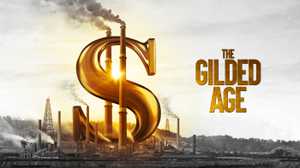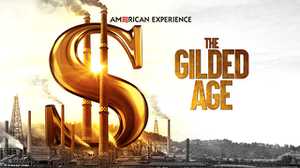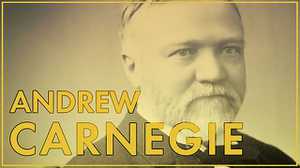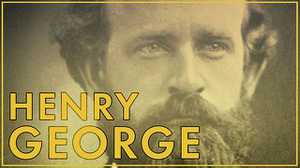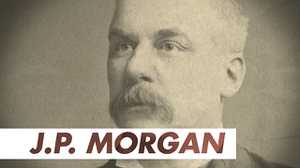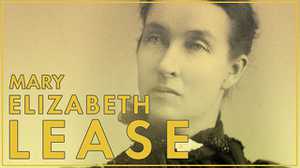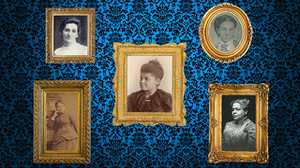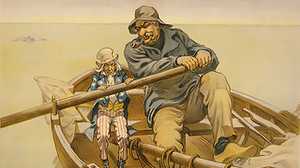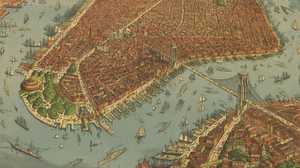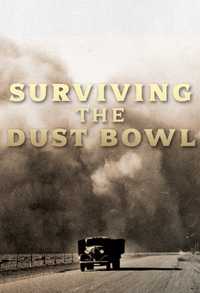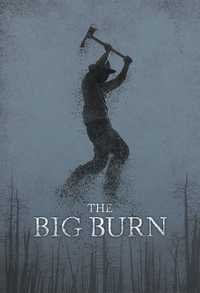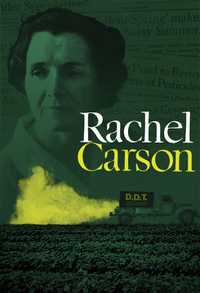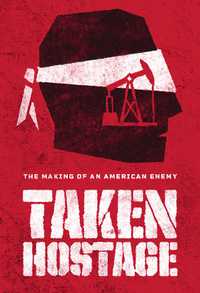ARCHIVAL FOOTAGE: SLEIGHS AND SNOW NYC
Narration: A vicious cold snap hit New York in the first week of February, 1897, but nothing could slow the preparations for the impending revelry.
The city’s wealthiest citizens were readying themselves for one of the most anticipated balls in the nation’s history – an extravagant exclamation point on what would come to be known as The Gilded Age.
Rebecca Edwards, Historian: During the Gilded Age Americans feel quite certainly that they are the vanguard of civilization and progress. This is an enormous period of opportunity, and possibility, and hope.
Narration: No group felt more confident about the future than the guests who would gather for the party at the luxurious Waldorf Hotel.
The evening’s total price tag, according to newspaper reports, was enough to feed nearly a thousand working class families for a full year.
Defenders noted that the ball stood to benefit the entire city. Critics begged to differ.
“With all the people,” warned one minister, “who have to lie awake nights contriving to spend their time and their money, and all the others who lie awake wondering how they may get food, there is danger in the air.”
John Kuo Wei Tchen, Historian: It was a fractious time in which a sense of desperation amidst growing wealth was emerging.
Edward T. O'Donnell, Historian: Increasingly workers begin to say, “If I as, as a member of this society lack the ability to pay my bills, and to feed my family then I am not a free citizen of a healthy republic. I’m something, something else, something that the Founding Fathers would not recognize.”
Richard John, Historian: The magnitude of the late 19th century transformation of American society is hard to exaggerate. It was as if you woke up in one country and went to bed in another.
Narration: Thirty years after the Civil War, America had transformed into an economic powerhouse. But the transformation had created stark new divides in wealth, standing and opportunity.
Steve Fraser, Historian: It’s shocking for people to see a country developing before them
that is increasingly clearly divided into the haves and have-nots.
Nell Irvin Painter, Historian: Gilded is not golden. Gilded has the sense of a patina covering something else. It’s the shiny exterior and the rot underneath.
Narration: By the time New York’s elite gathered at the Waldorf ballroom, the richest four thousand families in the country — less than one percent of all Americans — had scooped up nearly as much treasure as the other 11.6 million families combined.
“We are the rich,” one partygoer remarked. “We own America; we got it, God knows how, but we intend to keep it if we can.”
H.W. Brands, Historian: There is this fight over what is America’s collective self-identity. Who are we? Are we two nations, the poor and the wealthy, or are we one nation where everybody has a chance to succeed?
Scene 1: Progress
AERIALS AND SCENICS OF VARIED AMERICAN LANDSCAPES
David Nasaw, Historian: When this nation comes out of the Civil War we are still a nation divided by regions. There’s very little national market. If you need a pair of shoes you don’t get it from a factory 100 miles away. You get it from the local shoemaker.
Nell Irvin Painter, Historian: Life was much, much more local, much more what was going on right around you, what your neighbors were doing, what your friends were doing, what your enemies were doing and how you were doing on a day-to-day basis.
H.W. Brands, Historian: America had been founded, its political system had been founded for a country of farmers but it was becoming a nation of industrialists. It was becoming a nation of urban workers. It was becoming a nation of cities.
ARCHIVAL FOOTAGE: TRAINS AND TRACKS
H.W. Brands, Historian: Railroads knit the entire country together in a way that hadn’t existed before. So now merchants, manufacturers, industrialists can think nationally. You don’t have to think simply in terms of your local market. If you have a good idea, if you have a good procedure for producing something you can think of selling your goods all over the country.
Narration: By the early 1880s the nation’s largest corporation, the Pennsylvania Railroad, carried more than two million tons of industrial and consumer goods every year.
Steel left mills in Pittsburgh for destinations around the country; so too did refined oil from Cleveland, factory-made furniture from Cincinnati, and harvesters from Chicago.
Railroads moved coal from Wyoming, timber from Oregon, silver from Nevada and Colorado, and copper from Montana.
Tens of thousands of young men and women from farm families could hop on the train to go where the jobs were: the newly industrializing cities.
Former slaves and their children joined the urban migration, bound for new opportunities in Memphis, Atlanta, Richmond, or as far north as Philadelphia and New York.
Paula Giddings, Writer: The hope is for equality, and for first class citizenship, and to be a part of what is happening in terms of progress and change. They’re trying to make the democracy and the country work for them.
Steve Fraser, Historian: Progress is part of the American credo and has been almost from the beginning of the nation. Americans prided themselves on their inventiveness, their ingenuity, their entrepreneurial get-up-and-go.
Paula Giddings, Writer: Progress is thought of as inevitable. It’s divinely inspired. There’s a pastor who talked about these technological innovations as God’s tools to make a more perfect society. And so it becomes almost a spiritual idea, this industrial spirit.
Scene 2: Carnegie
Narration: One of the most innovative entrepreneurs of the day was Andrew Carnegie.
He owned a stable full of fine-blooded horses and enjoyed taking long rides through Central Park.
In the spring of 1881 he was a man in the saddle in all ways, having just consolidated his growing manufacturing enterprises under a single banner: Carnegie Brothers & Company.
Some days Carnegie would ride out of the park and head north on upper Broadway. Other days he would ride all the way to the High Bridge, where traffic loosened and he could open up to a gallop along the banks of the Harlem River.
In the few hours he was out riding through New York his blast furnaces 300 miles to the west produced more than sixty tons of steel . . . and earned him about as much as the average American made in a year.
This remarkable and novel fact made 45-year-old Andrew Carnegie the emblem of a new kind of American dream.
Like John D. Rockefeller in the oil refining business… and Cornelius Vanderbilt in railroads, Carnegie was riding a wave of industrialization — using new technology and mass production to secure enormous personal wealth.
David Nasaw, Historian: What’s important to realize is that these men they have visions. Carnegie, Rockefeller, the railroad barons they don’t invent anything. They’re managers.
Jackson Lears, Historian: Carnegie is one of the few American millionaires of this era of any other who can genuinely call himself a self-made man. He really does come from humble origins.
Narration: Andrew Carnegie was born in 1835, in a small town in Scotland.
His father, William, supported the family as a respected weaver of fine clothes and linens, until the spread of more efficient mechanized looms began to cut into his business.
Edward T. O'Donnell, Historian: William Carnegie literally cannot provide for his family. They were hungry, and poor, and there’s no future at this point for them and so they are forced to make really an incredible decision, which is to uproot themselves from this town in Scotland where they’ve lived for generations and go to some strange place called Pittsburgh, Pennsylvania.
Narration: Andrew Carnegie and the city of Pittsburgh came of age together. Steam-powered machine shops and iron factories drew workingmen to the city in the 1840s. The first railroads arrived in the 1850s, not long after the first telegraph wires.
There was opportunity on every coal-dusted block, especially for a go-getter like Carnegie, who became his family’s main provider when he was still a teenager.
Jackson Lears, Historian: Carnegie has a number of talents that get him noticed early. He is a smooth operator, which is a term that was used for guys that worked for Western Union who could tap out Morse code very smoothly.
Narration: Young Andrew rose quickly, from telegraph operator to trusted assistant of a powerful railroad manager, to a manager himself. But he was not content with a salaried job – no matter how good the salary.
Carnegie saw opportunity in the booming railroad industry.
Relying on connections to powerful railroad executives, he invested in sleeper cars, iron works, bridge building concerns, coal-mines and oil producers.
He was not yet thirty when he resigned his position at the Pennsylvania Railroad to become a full-time, independent “capitalist.” Carnegie’s skill at turning insider information into hard cash had allowed him to amass a fortune of nearly half a million dollars.
Not long after a product caught his eye, one the railroads badly needed: steel.
Edward T. O'Donnell, Historian: It’s not a new substance; steel’s been around for a long, long time but mass produced, high quality, super strong steel, that is a new thing in The Gilded Age.
Narration: In 1873, at the start of one of the worst economic depressions in the nation’s history, Carnegie pushed forward on construction of a massive steel plant outside of Pittsburgh.
David Nasaw, Historian: Nobody can understand why he is building huge factories during the depression. The bankers question him, you know, “Why are you doing this?” But Carnegie understands that steel is the basic building block of the new America. It’s gonna begin with railroads and then the cities are gonna be rebuilt with steel, and the bridges are gonna be rebuilt with steel.
Narration: In the fall of 1875, while the economy was still sliding downhill, the first steel rails rolled out of Carnegie’s new mill.
The keys to underselling the competition, as Carnegie saw it, were volume and efficiency.
“Cut the prices, scoop the market, run the mills full, watch the costs,” Carnegie preached, “and the profits will take care of themselves.”
Jackson Lears, Historian: Rather than conserve his machinery he uses it up. If the machinery wears out he’ll just buy more. He wants 24-hour operation, two shifts, 12 hours each for the… workers. The point is to get the productivity going at… peak performance.
Narration: Carnegie’s grand bet had paid off beautifully by 1881. His newly consolidated company was on its way to a profit of 40 percent in its first year, which meant a personal take of more than a million dollars.
At forty-five, the steel baron found himself with plenty of spare time to reflect back on his improbable rise.
He read the great English philosophers, made studies of Confucius and the prophets of Buddhism, Hinduism and the Persians . . . searching for answers to a gnawing question.
David Nasaw, Historian: Andrew Carnegie is an intellectual, self-educated but an intellectual. And he tries to figure out how the hell did this happen. “Why me? Why have I made all this money?
Scene 3: Alva Triumphs
BUILDING HOUSE & WATERCOLOR INTERIORS
Narration: It was, by design, like no house New York had ever seen -- a gleaming palace with gargoyles and gables and flying buttresses.
Plans for the grand interiors included the fine (and expensive) detail favored by European aristocracy.
All of it was carefully devised by 25-year-old Alva Smith Vanderbilt, who had married into one of the country’s wealthiest families. Alva meant to create a spectacle at Fifth Avenue and 52nd Street. And she did.
By the time it was completed in 1882, the mansion was the talk of New York society.
Critics, including many of Alva’s friends, thought her new home too ornate. They were appalled by the nude statues, which stood proudly on exterior walls – for all the world to see.
Sylvia Hoffert, Historian: Alva craves attention and so she… intentionally makes the outside of the house something that New Yorkers are not used to. She’s testing whether she can shock people or not. She writes, “People who don’t appreciate that this is the latest in architectural design. They’re unsophisticated. They’re Puritans.”
Sylvia Hoffert, Historian: It’s clear that she doesn’t really care what other people think as long as she gets what she wants. The Vanderbilts were in society but they weren’t at the very top. She has a goal and her goal is to make the Vanderbilts leaders of New York society.
Narration: Scaling the heights of New York society was perilous work for any newcomer, even one with the right address on Fifth Avenue.
STILLS: FIFTH AVENUE BELOW 50th STREET
The city’s fashionable families, most descended from the earliest Dutch settlers, were wary of social climbers. Their own homes reflected this sensibility.
They prized manners and modesty over striving and show.
Edward T. O'Donnell, Historian: Part of the ideal back at the beginning of the Republic was a notion of restraint and simplicity. So you might be really wealthy but you wouldn’t parade around in a gilded carriage and have servants in livery and all of that. That was considered bad form not just gauche but really bad republican form, small R republican form.
Sylvia Hoffert, Historian: Old money was wealthy but these new entrepreneurs were immensely wealthy, the kind of money that could buy anything. They aren’t quiet about it. They want to flaunt it.
CAROLINE ASTOR PORTRAIT
Narration: Few members of New York’s old money crowd were more suspicious of the newly wealthy than Caroline Schermerhorn Astor, whose ancestors had arrived from the Netherlands in 1630.
And no one held more sway.
It was Mrs. Astor who would decide if the Vanderbilts were worthy of ascension into the highest tier of society. It was a very exclusive club, roughly the number of guests Caroline Astor could comfortably host in her ballroom. Four hundred was the magic number.
John Kuo Wei Tchen, Historian: It’s a very personal and interpersonal world in which having the right kind of tea sets and the right kind of surroundings are fundamental. Since the US doesn’t have a preexisting aristocracy it’s really these women who kind of have to make it up on the fly and they become the people who are creative and improvisational in claiming who the new elites would be and how deserving they are.
Narration: Mrs. Astor was especially wary of the Vanderbilts.
Their patriarch, Cornelius, who had made his fortune building railroads, was considered ruthless, unscrupulous and crude.
He had reportedly horrified one society dame — and all of her friends — by spitting his tobacco plugs onto her carpet.
Mrs. Astor did have a grudging respect for the Vanderbilt family money. Cornelius’s children and grandchildren were already among the richest individuals in the entire country. And with no inheritance tax, income tax, or tax on corporate earnings, they were certain to remain so.
Sylvia Hoffert, Historian: When you think about Caroline Astor’s 400 it makes it sound like it’s really rigid but it’s fluid enough for some people to make it and then make it a little bit further, and then make it a little bit fu ther. Alva’s determined to take advantage of that fluidity.
STILLS: MOBILE, ALABAMA
Narration: Alva understood the power of money. Born in Alabama before the Civil War, her family fortune – made in the slave-fueled cotton trade – afforded her a privileged existence.
She spent her girlhood at fashionable homes in New York and in France, attended a pricey boarding school outside Paris, and summered at the resort town of Newport, Rhode Island.
“There was a force in me,” Alva recalled, “that seemed to compel me to do what I wanted to do regardless of what might happen afterwards…”
Sylvia Hoffert, Historian: She was disobedient. She was willful. She says that there was one year that she was beaten every day for misbehaving. What she learns from childhood is that if she is disobedient enough and willing to take the punishment then she’s gonna get what she wants.
EXTERIOR OF 660 FIFTH AVENUE
The furniture was still being delivered from Europe when Alva and her husband, Willie K Vanderbilt, decided to throw a housewarming party in their very accommodating ballroom.
They sent invitations to twelve hundred guests -- none more important than Mrs. Astor.
Alva could not be sure Mrs. Astor would accept, so she made certain her upcoming ball was the talk of the town.
John Kuo Wei Tchen, Historian: It’s a moment in which the newspapers are competing for news. And hundreds of thousands of people not only in New York City but also nationally are reading these newspapers. It’s really comparable to the emergence of social media. So instead of tweets we have people like Alva who are understanding this change and starting to take advantage of the new possibilities of the media coverage.
Sylvia Hoffert, Historian: She invites newspaper columnists to come into her house. She gives them very detailed instructions as to what kind of décor the house has, what it’s made of, who the artists are — all of the details that she thinks will impress people.
HEADLINES
Narration: On the day of the ball, March 26th, 1883, New York was abuzz.
Society dames spent hours fitting themselves into gowns styled after bygone European aristocracy.
Their husbands visited hairdressers, then rushed home to pull up their tights and strap on swords.
Crowds of curious onlookers began gathering outside the Vanderbilt mansion at eight that evening, though the party would not begin until eleven.
STILL: CAROLINE ASTOR
Narration: Mrs. Astor was among the arrivals.
As she made her way down the grand staircase, she took in the century old French and Italian tapestries, towering palms, Japanese lanterns and gilded baskets filled with roses.
Young Alva, Mrs. Astor had to admit, exhibited style.
“We have no right to exclude those whom the growth of this great country has brought forward,” Caroline Astor explained. “The time has come for the Vanderbilts.”
STILLS FROM THE BALL
Steve Fraser, Historian: This is a nouveau riche world. They were what used to be called the chip-chop aristocracy, had no breeding, no genealogy and they need to lay claim to establish their cultural legitimacy. One way to do that is to live splendidly to be a spectacle and awe people.
John Kuo Wei Tchen, Historian: The ostentation is not frivolous. It’s really about how do you express the kind of virtue that you have through taste and through what you consume.
STILL: ALVA IN HER COSTUME
John Kuo Wei Tchen, Historian: Alva is actually being very creative, and being very tenacious in trying to establish that profile. Branding the Vanderbilt family, making the public, other elites included especially, appreciative of why they belong. It’s not just wealth building in terms of actual dollars, it’s wealth building in terms of status.
Scene 4: Opportunity
FOOTAGE: INDUSTRIAL WORKERS; IMMIGRANTS
H.W. Brands, Historian: The American economy was growing very rapidly. There were opportunities for all sorts of people, people who had skills and people who had no skills, and they were attracted to America. If you wanted to improve your lot, especially if you wanted to… ensure that your children would have a greater opportunity than you did America was the place to go.
Narration: Between 1880 and 1885 more than three million men, women and children entered the United States, more than triple the number who had arrived in the previous five years.
They came from Ireland, Italy, Russia, Scandinavia, Asia and Latin America — fleeing religious persecution and poverty.
Rebecca Edwards, Historian: The US is kind of a gambler’s paradise in this era. It’s a lottery where you can go and you may do well. You’re very unlikely to be Andrew Carnegie and get super rich but a few people do it and many more will get by.
Paula Giddings, Writer: Freedom from want now is going to create a new sense of the imagination - freedom from all the problems of the old world, from its resentments, from its conflicts, from its scarcities.
ARCHIVAL FOOTAGE: NEW YORK CITY/MEN AT WORK
Narration: The nation’s biggest draw was New York – the country’s first million-person city, where the population had nearly doubled in a single generation.
John Kuo Wei Tchen, Historian: If you can just imagine what it’s like to be in a place that’s growing so quickly around you that it’s almost dangerous to be outside [CHUCKLES] - the numbers of people, the numbers of vehicles, the acceleration of technology, the concentration of money means that the buildings are happening all the time, there’s street works happening all the time, there are people moving through the streets all the time.
Narration: The city needed muscle to build new streets, sewers and water mains. There were jobs running elevated trains, driving omnibuses, raising new wonders like the Brooklyn Bridge and the Statue of Liberty.
Immigrants often worked in trades according to their place of origin – Irish as carpenters; Italians stone masons; Syrians street merchants.
Owners of garment factories, molasses refineries, meat-packing plants relied on people who were willing to work long hours for meager pay.
David Nasaw, Historian: One of the things we have to understand about The Gilded Age is that the number of individuals who become employees, who become dependent on paychecks increases dramatically.
Nell Irvin Painter, Historian: Workers served as sellers of their labor and it was important for the person who was running the whole enterprise to buy that labor as cheaply as possible. It didn’t matter from the point of view of the person at the top of the company whether or not the cheapest possible price for labor could support a family.
Narration: Employers expected everybody, even children, to work 12 hours a day, 6 days a week, with few if any breaks.
Factories were often overheated and lacked ventilation. Workers had no escape from harsh chemicals that caused lung infections and respiratory disease.
David Nasaw, Historian: There was no workman’s compensation. There was no insurance. If you were lucky you were taken care of for a little while by the employer but industrial accidents were a major concern. Workplace safety was a major concern.
GROUPS OF WORKING PEOPLE
Narration: A sense of shared peril bred solidarity. Men and women joined labor unions to demand better wages and safer working conditions.
They embraced their role in democracy and proudly identified themselves as working class.
Richard John, Historian: The late 19th century United States was an anomaly in world history in a major way we… confronted all of the challenges that are associated with rapid industrialization, the labor conflicts, the tensions between one economic group and another within a government in which just about every white male and many African Americans, a decreasing number, but many African Americans, had the vote.
David Nasaw, Historian: People voted. From the moment they got off the boat at Castle Garden or Ellis Island, everybody voted and political participation was high.
Narration: The always-increasing working class vote worried New York’s political barons in both parties.
Strikes and boycotts in the summer of 1886 forced politicians to act and they jailed union leaders.
Edward T. O'Donnell, Historian: Labor leaders in July of 1886 say, “Enough with the, the major parties. The Democratic Party and the Republican Party are in the grasp of big business. They have no interest in the problems of working people. We’re gonna form an independent labor party and we’re gonna run somebody for Mayor.” And they begin to court Henry George.
Scene 5: Mayor’s Race
Narration: Henry George did not look the part of political savior. An unassuming 47-year-old author who dressed like a small-town merchant, George was not seeking a life in politics just then. But he was intrigued by the offer.
Edward T. O'Donnell, Historian: He’s the perfect candidate. He’s a worker, so he’s got this working class credentials but he’s also an intellectual. He’s also a public figure.
Narration: Henry George’s renown was almost entirely self-generated, born out of his own difficulties with the rapidly changing American economy.
A native of Philadelphia, George had gone west to California, when he was just nineteen, to make his fortune.
He tried his luck in the gold fields, set type in printing firms, and even sold hand-cranked clothes dryers door to door to support his young family. Nothing worked.
His low point came the day his second child was born . . . and his new printing business was failing.
Edward T. O'Donnell, Historian: He’s absolutely broke and he doesn’t know what to do. He’s completely desperate. Now he has a family to provide for so he steps out onto the street and he walks up to a man and says, “Could I have five dollars?” And the man gives him the $5 bill and George writes, “I was desperate enough to have killed him for that money.” Henry George is sort of imprinted in that moment in a way that’s, he’s never going to forget. Here he is this hard-working, smart, ambitious man and he’s out there on the streets begging for his little family.
Richard White, Historian: He begins to wonder what’s going on. This is a country with plenty of land. It’s a country with plenty of resources. It’s a country with millions of people who wanna work and who can’t. What has gone wrong?
Narration: George spent nearly a decade parsing the riddle, and emerged with an answer: a 500-page tome describing the new American political economy.
Jackson Lears, Historian: He produces this book that draws everyone’s attention to what ought to have been plain as the nose on their faces, the sheer fact of inequality, poverty amid plenty.
H.W. Brands, Historian: What George recognizes is that along with American progress, with the development of the economy, with the development of great fortunes there’s also the development of poverty, that the success of America is not uniformly spread. He said that it’s not fairly spread.
Narration: “It is as though an immense wedge were being forced . . . through society,” George wrote. “Those who are above the point of separation are elevated, but those who are below are crushed down.”
Henry George self-published his new book – Progress & Poverty — and moved to New York in 1881 to promote it. “It will ultimately be considered a great book,” he told his father. “This I know.”
He was right: Progress & Poverty was a surprise best-seller.
Edward T. O'Donnell, Historian: One of the things that captures people’s imagination is the way he talks about poverty. He breaks with the American tradition, which always said poverty is the result of your own failures. George says, “It’s not your own fault. It is the fault of the way we have organized our economy, the way we’ve allowed certain things to develop unchecked and uncontrolled. There’s no reason for anybody to be poor in America.
Narration: Labor Parties had run candidates for Mayor in New York before; they rarely polled more than several hundred votes.
But in the fall of 1886, with little more than a month to Election Day, Henry George agreed to toss his hat in the ring on behalf of working people.
Richard White, Historian: He sees it as a way to popularize his ideas. The 1%, as George calls it, owns New York. So for him it seems the perfect example of the problems that he talked about in his book.
Edward T. O'Donnell, Historian: He accepts the nomination and over the next five weeks or so they launch the most incredible campaign in New York City history. He will give five, six, seven speeches a night all around the city. This is called the tailboard campaign because he would get in these wagons, they’d pull the wagon up into in front of a railroad station, in front of a factory, flip down the tailboard, Henry George would stand up and deliver a speech urging people to not vote for the major parties but to vote for the United Labor Party.
Narration: “Look over our vast city, and what do we see?” George would say. “On one side a very few men richer by far than it is good for men to be, and on the other side a great mass of men and women struggling and worrying and wearying to get a most pitiful living…. Is this by the will of our Divine Creator? No. It is by the fault of men…We are going to the polls.”
George championed opportunity for all, and a city government that would “prevent the strong from oppressing the weak and the unscrupulous from robbing the honest.”
He offered big new ideas like increased taxes on property owners, public ownership of mass transit and better working conditions.
Edward T. O'Donnell, Historian: Once the grassroots campaign gets going he sort of played off his own momentum and the enthusiasm of the crowd. And began to realize something seems to be happening here.” He starts to have a sense that, “We could actually win this thing.
Narration: Most political pros believed his message was too radical to have wide appeal.
They figured he would poll five thousand votes, maybe ten thousand, not enough to beat the favored Democrat or the Republican challenger.
Edward T. O'Donnell, Historian: On Election Day right out of the gate people are reporting huge turnouts.
HEADLINES
Edward T. O'Donnell, Historian: At the end of the day George finishes second. He gets 68,000 votes, which is a lot more than just a few hundred, which is what a typical Labor Party candidate could get.
H.W. Brands, Historian: The appeal of Henry George indicates that a growing number of Americans believe there’s something seriously wrong with the emerging American economy. America retains this idea that it is this land of opportunity and when people like Henry George say, “We have to pit workers against employers, the, the poor against the rich,” what he is saying is, “It’s not the land of opportunity. The opportunity is closed off.”
Scene 6: Morgan
Narration: J. Pierpont Morgan valued order and stability above all else. He demanded routine.
The 51-year-old banker breakfasted each morning at his home at Madison Avenue and 36th Street enjoying his first cigar of the day while reading the financial news from Europe, which came in over his personal telegraph machine.
By mid-morning he hopped in a hired carriage for the ride to his office building at the southern tip of Manhattan.
Half an hour later, he was on the narrow cobblestone lane where modern American finance was being invented – Wall Street.
When he closed the door to his glass office, J.P. Morgan rarely looked up from his paperwork. Everyone at Drexel, Morgan & Company – even his partners -- knew not to interrupt him.
Susie J. Pak, Historian: Morgan was definitely the boss. He was a very confident person and when he determined what was the right path of what to do he did it. He was undisputedly the final word.
H.W. Brands, Historian: Morgan came from a moneyed family, moneyed in two senses—they were wealthy but in addition they were in the business of money. And Morgan understood at a very early age that money was what made everything else happen.
Narration: Pierpont’s father, Junius Morgan, was a powerful London-based American banker who had introduced his son to his network of European investors, and taken pains to ready him for a life in finance.
“I wish to impress upon you the necessity of preparation for responsibilities,” Junius had told his only surviving son. “Be ready to assume & fulfill them whenever they shall be laid upon you.”
Susie J. Pak, Historian: Junius was a very exacting but also very attentive father so he’s very, very interested in Pierpont’s moral, intellectual health and development. His father had groomed him for business and he not only accepted it but I think also expected it of himself.
Edward T. O'Donnell, Historian: J.P. Morgan sees himself as a nation builder, as a person who’s not only carrying out private business transactions but as a person really at the center of this new emerging, booming American economy, booming American society.
ARCHIVAL FOOTAGE: NYC FROM WATER; STREET SCENE; COAL
Narration: America had emerged as an urban and industrial powerhouse in the thirty years since Morgan followed his father into banking. There were only eight U.S. cities over a hundred thousand people in 1860. Now there were almost thirty.
The country was overtaking Britain and Germany in the production of iron, steel, oil and coal. European investors wanted a piece of the American action, and turned to Morgan to get it.
Richard John, Historian: Think of him as a conduit or a pivot between European capital and American industry, and especially American industry that’s dependent on large sums of foreign capital and that will be railroads.
TRAINS
Narration: The railroads pushing into the American West became the hot ticket investment in the 1870s and 1880s.
MAP GRAPHIC
By 1888, billions of dollars had flowed into the industry, much of it from Morgan’s European clients.
But Pierpont was finding it increasingly difficult to vouch for the financial stability of America’s signature industry.
H.W. Brands, Historian: The American industrial economy in the Gilded Age was a bare knuckles competitive arena. Someone who had a rail line from New York City to Albany, okay, had that rail line. But there was usually nothing that prevented a competing railroad from building another line let’s say on the other side of the Hudson River. There could be cutthroat competition between the two.
David Nasaw, Historian: J.P. Morgan understands that the railroad business, unless it stops competing, unless it stops these wasteful parallel roads that lead to the same place is not gonna be able to pay off its debts and make money. He understands that competition has to be eliminated, that the railroads instead of competing with one another have to begin to cooperate.
TRAINS IN WINTER; MORGAN’S HOUSE
Narration: In the Christmas season of 1888 — between tending to the plans for Madison Square Garden and paying for a holiday dinner for 200 orphans at the East Side Newsboys Lodging House -- Morgan convened a gathering of fourteen key railroad presidents.
Edward T. O'Donnell, Historian: This is a guy who can beckon these corporate titans to his home and they show up.
Steve Fraser, Historian: Morgan had already established a reputation for his commanding presence, his… own internal discipline. He was a man of a kind of iron will and his purpose at that meeting is to begin to establish among them some kind of self-conscious reining in of their competitive instincts.
Narration: Morgan hosted a series of meetings over the next three weeks, with harsh words cutting through the halo of soft electric light in his Madison Avenue mansion.
Amid his growing trove of treasures – paintings, tapestries, medieval armor, ivories, and ancient bronzes – Morgan bullied and cajoled.
“Your railroads belong to my clients,” he gruffly reminded the bosses.
Edward T. O'Donnell, Historian: He’s a very large man. And people always talk about his piercing eyes, intimidating, hawk-like eyes. So when he sweeps into a room people describe it as sort of the wind rushing through a room. He has a condition that has disfigured his nose. It’s enlarged, it’s red. He knows that it’s a bit unnerving and that actually played to his advantage in these close negotiations.
Narration: By the second week of January, Morgan had herded the railroad men into an agreement to set uniform rates, to assign to each road “its due share of the competitive traffic,” and to stick to the arrangement or risk financial penalty.
The commercial treaty lasted only a matter of weeks.
Edward T. O'Donnell, Historian: Morgan comes to a conclusion that he’s never gonna be able to pull this off that that these railroads are inherently antagonistic toward each other so the only solution is consolidation. To merge these railroads so there’s less and less competition.
Narration: Morgan would never say the word aloud, but his plan was to engineer something nearing a monopoly in the railroad industry – and to maintain control.
H.W. Brands, Historian: Morgan had almost an aesthetic sense of what an economy should
look like, and it should be well organized. He thought that people like him with his background, with his understanding, with his intelligence were the ones who really ought to direct the American economy.
Scene 7: Lease & Populists
TRAINS TO AERIALS
Narration: Problematic as they were, the railroads were proving to be the engines of industrialization on the American plains.
By 1890, there were more than 70,000 miles of track in operation west of the Mississippi, where the population had nearly quadrupled in just thirty years.
American farmers were shipping wheat, corn, oats and rye across the world — feeding the growing cities on the Eastern seaboard, and the capitals of Europe.
But the men and women producing this bounty weren’t seeing many of the benefits. Farmers in Kansas, for instance, were working fifteen- or sixteen-hour days, and losing ground.
Prices for their crops had been declining for a decade.
Most farmers had taken loans to make up shortfalls and their mortgages were likely to be held by bankers back East. And there were few laws to stop the most predatory lenders from charging 20, 30, or even 50 percent interest per year.
The cost of transporting crops to market, meanwhile, remained an onerous burden.
David Nasaw, Historian: The only way to get their goods to market is on the railroads and they’ve kept rates high. These are not the small family yeoman farmers that Thomas Jefferson envisioned as the heart of America. These are farmers who are in debt to the banks and who now have to pay a huge chunk of their income to the railroads.
Jackson Lears, Historian: There are memories that people still have of what it was like before industrial capitalism. That of course is rooted in the agrarian past, the small proprietor past. It is also redolent of a more egalitarian vision of society than one that is emerging.
H.W. Brands, Historian: There was a feeling that control had shifted from Kansas to the East Coast. They looked at their own lives and they say ‘Fifty years ago, when my grandfather was young, he controlled his own life. This idea that people ought to be in control of their destiny is something that’s very powerful.
STILLS: LEASE
Narration: Frustration in Kansas had sharpened into resentment and scorn.
Among the loudest voices of protest on the hot dry prairie was a 39-year-old former school teacher and licensed attorney named Mary Elizabeth Lease.
She was an energetic agitator who made a living giving speeches in support of underdogs: labor unionists, suffragettes and, in the summer of 1890, the Kansas farmer.
“She flashed across Kansas in that day of turmoil,” one well-known editor remarked, “a harridan in the eyes of her enemies, a goddess to her friends. I think she was a little of both.”
Rebecca Edwards, Historian: She’s apparently just a riveting orator. She has a tremendous voice and she can speak to crowds of thousands, and she also has a tremendous memory. She can speak for a couple of hours without reviewing any notes. And clearly she strikes a chord.
Narration: Mary Lease could empathize with the thousands of Kansans whose daily lives balanced on a razor’s edge between plenty and want. She was one of them.
LEASE
Narration: Lease was the sixth child of immigrants who had fled the Great Famine in Ireland. Her father and one brother died fighting for the Union in the Civil War. Another brother was killed when a train crushed him while working as a laborer for a railroad corporation.
In the early 1870s, when Lease was still in her twenties, a nationwide economic depression swept away her husband’s pharmacy business and all of their savings.
Rebecca Edwards, Historian:They lose everything. She’s very embittered by poverty, and frustrated, and comes to feel that, you know, that the social order just isn’t fair.
Narration: Women could not run for state office in Kansas in 1890, but Lease helped to spur the founding of a new local political organization — the People’s Party, widely known as the Populists.
David Nasaw, Historian: The Populists believe that they’re being ripped off, that industrial capitalism discriminates against them, and they’re right. The Populists organize politically to do something about that.
HEADLINES/POSTER
Steve Fraser, Historian: They leave both parties to form their own because they feel both parties are corrupted beyond hope, that they’re too much under the thumb of… big business. They buy senators. They buy congressmen. Their lobbyists infest the capitol.
Narration: The People’s Party put up a full slate of candidates for the election that year, and announced its intent to wrest state government from the grasp of Big Business.
Steve Fraser, Historian: Mary Lease says, “This kind of system is… fatal and destroying the lives of millions of people, and if we don’t do something drastic about this we not only will lose our way of life but American democracy will go down the, down with that way of life.”
Rebecca Edwards, Historian: She said when someone has five homes and someone else is starving then the first man has something that belongs to the second man. People shouldn’t be starving while other people have so much more than they can possibly ever use or spend.
Narration: Lease had scoundrels to blame, and she called them out. She was particularly focused on bankers in New York, like the one at 23 Wall Street, who seemed to have his fingers in everything, J.P. Morgan.
“It is no longer a government of the people, by the people and for the people,” Lease told her crowds, “but a government of Wall Street, by Wall Street and for Wall Street . . .
Steve Fraser, Historian: Wall Street is the arch villain. It doesn’t produce anything. It just trades in paper, controls everybody else’s life without offering anything tangible to the national welfare. That’s how they see it.
Narration: Republican officials, whose party had dominated state politics for nearly thirty years, weren’t much concerned with Lease and her followers in the early weeks of the campaign.
But they were startled by the procession of a thousand horse-drawn carriages bound for one of the People’s Party events, by the crowds of 10,000 at a rally in Lawrence, and 20,000 in Emporia, and by reports that the upstart party had enrolled 130,000 members in the state.
Election day news out of Kansas shocked the country. The Democrats won only 8 seats in the state legislature; the Republicans, long in the majority, won 26. The People’s Party won 91 seats, and control of the Kansas state legislature.
“This triumph,” declared one Populist newspaper, “is but the beginning.”
Success in Kansas sparked a brushfire that swept through much of the nation in the next two years.
Newly encouraged farmers joined acolytes of Henry George, labor unionists and miners from the West.
Black professionals and farmers in the South were also drawn to the People’s Party. Republicans had abandoned them in the years after the Civil War; and Democrats were working to strip them of the right to vote. The Populists were the last best hope.
Rebecca Edwards, Historian: There is a surprising number of black farmers who have managed to buy land despite the fact that most white landowners in the South are pretty reluctant to… sell land to blacks. But the vast majority of black farmers are tenant farmers or they’re sharecroppers. The economy’s in very bad shape and the Populists have a program to really transform the economy in ways that’ll be good for working people.
Narration: The People’s Party built a platform of radical and untested ideas: public ownership of railroads and utilities, a federal income tax, a Treasury department empowered to write loans and to control the money supply.
Noam Maggor, Historian: The Populists were incredibly modern, incredibly forward-looking. They are thinking in very constructive, practical ways about how American political institutions and the role of government could reorganize.
David Nasaw, Historian: What’s important to remember about this period is this sense of hope. Change was possible. Change was imminent. Democracy would triumph.
Scene 8: Homestead
Narration: While the Populists were organizing for future elections, there was another kind of fight bubbling at Andrew Carnegie’s steel mill in Homestead, Pennsylvania, just outside of Pittsburgh.
Homestead had become the jewel in the crown of Carnegie Steel by 1892. The plant was the envy of the industry.
The town that grew up around the mill accommodated the families of four thousand steel workers, many of whom enjoyed the protection of the two labor unions that represented them.
STEEL WORKERS
Rebecca Edwards, Historian: People are doing pretty well under Carnegie. The skilled workers at Homestead will have pretty nice homes. Their kids are getting an education, and there are ways in which they really have bought into and benefit from what Carnegie has built.
Edward T. O'Donnell, Historian: They have incredible, identity with this work. They… feel that this is not just simply a job that they go to, there’s a real sense of job ownership. Clearly they know Carnegie owns the factory but they feel that they have a stake in it.
ORIGINAL FOOTAGE: SCOTLAND
Narration: Andrew Carnegie was enjoying an extended vacation in the British Isles with his wife in the summer of 1892, but he was keeping an eye on business.
Union demands for wage increases at Homestead had riled him; his calculation was simple: rising wages meant falling profits. Like business owners all over the country, Carnegie did not care to be dictated to by his hired hands.
Edward T. O'Donnell, Historian: Carnegie may be a friend of labor, but he’s most importantly an independent capitalist. When he’s got these competing sets of values it comes down to running his business in the most profitable way possible. And by 1892 he says, “That’s gonna be without a union labor force.”
Narration: Carnegie and his team had already diminished the power of labor at his smaller plants; now he planned to break the unions at Homestead.
If the steel baron had any qualms, it was a fear that his reputation as the workingman’s friend would be broken too.
But he never doubted his right to do it.
His long-ago search to understand his own spectacular success had made him a true believer in the philosophy of Herbert Spencer.
SPENCER TEXT
Narration: Spencer had migrated Charles Darwin’s elegant new theory of evolution from the realm of biology to society at large – and coined the term “Survival of the Fittest.”
Edward T. O'Donnell, Historian: Social Darwinism becomes a very powerful idea that justified success and justifies doing nothing about the people that are less fortunate. Herbert Spencer would say, Look around you. The people who you see rising, the people who you see succeeding are the fit ones. They are the ones who have “it” whatever “it” is—good genes, hard work, morality, thrift, sobriety. They have got “it” and they are succeeding because of that and that’s good.
Rebecca Edwards, Historian: Carnegie says “Oh. This is how the world is supposed to be. For me to struggle for survival out there in a ruthless way is gonna contribute to progress. So not only am I not being, you know, sinful when I am being ruthless I’m doing exactly the right thing.”
Narration: Carnegie had given his right hand man, Henry Clay Frick, clear instructions: demand a sizeable wage cut at Homestead, and refuse to negotiate.
“We all approve of anything you do,” Carnegie wrote from three thousand miles away. “We are with you to the end.”
Jackson Lears, Historian: He’s over in a manorial estate in Scotland drinking wine and, and going stag hunting. And his lieutenant, Henry Clay Frick, who’s mean as hell, is in charge and, and he’s the one who brings about the confrontation with the strikers. But Carnegie’s on board with it, of course, he’s just not on the premises.
Frick circled the 600-acre factory grounds with a fence, water cannons and sniper towers that gave Homestead the look and feel of an armed garrison.
The steelworkers would not be intimidated and refused to accept the proposed wage cuts.
Frick shuttered the plant and put a stop to the company payroll. Union men went on strike, and threatened to block any replacements from entering the mill.
On July 6th, 1892, under the cover of darkness, Frick shipped a 300-man private security force to protect the non-union replacement workers.
When the barge carrying the armed guards arrived, Homestead’s union employees were there waiting for them, guns in hand. After a prolonged firefight, the strikers used explosives in an attempt to blow up the barge.
At least 16 people were killed and more than a hundred and fifty injured in the battle that followed.
Carnegie refused to back down.
TELEGRAM
Narration: “Stand firm,” he telegraphed Frick from Scotland. “Must not fail now.”
It took five months, but Carnegie did crush the union at Homestead -- with plenty of help from state officials. When the company asked the Governor of Pennsylvania to send in National Guard troops to shore up its tattered private army, he dispatched a force of eighty-five hundred soldiers to put down the strike.
Carnegie also knew he could count on the federal government if needed. The president sent in troops to put down a similar strike at silver mines in Idaho that same week.
Rebecca Edwards, Historian: One of the big questions is, “Whose business is it? Is it Carnegie’s business and does he get to make all the decisions or do workers have a place in that business, too?” And that’s kind of an open question and government ends up really coming out on the side of the guy who owns the property rather than the people who do the work.
Narration: Carnegie was not happy that his public image had been tarnished by five months of bad press, but he made no apologies for exercising the full power and authority of ownership.
“Through the war at last,” Carnegie wrote to Frick from his new vacation spot in Italy. “What a relief . . . Now for long years of peace and prosperity.”
Scene 9: Crash
WALL STREET
Narration: The morning of May 4, 1893 dawned like any other spring day in lower Manhattan; contentment and complacency didn’t last long though, as strange news began to ripple through Wall Street.
One of the most powerful trusts in the country – a company that had a virtual monopoly on the manufacture of rope and twine – was on the verge of failure.
If this powerful near-monopoly could collapse, many wondered what was safe?
Cautious investors began to shed stock across industries; the Dow Jones Company recorded a precipitous drop. A run on banks picked up speed.
By the end of that day, the nation’s wealth was already draining away.
The United States had weathered panics and downturns before, in fairly regular cycles. But the last big hit was a generation earlier, and the American economy had been transformed in those twenty years.
H.W. Brands, Historian: When the Panic of 1893 hit, it was sharper, faster, and more severe than before and this reflecting the fact that the United States had industrialized further. There were more people in America who were dependent on their employment. There were more people connected to the growing financial system. There were more people who relied on the continued smooth working on things.
Rebecca Edwards, Historian: The US has industrialized that much more, has urbanized that much more, is that much more dependent on manufacturing jobs and so the impact is really very severe. People starve to death.
Narration: As many as a million people were thrown out of work. One in five Americans no longer had an income.
“Last cent gone,” wrote one young widow. “Children went to work without their breakfast. . . . This awful struggle is wearing me out.”
Julia Ott, Historian: What doesn’t exist in 1893 is really any capacity of government at any level, you know, national, state, local or anything like that to step in to help American citizens through hard times.
Rebecca Edwards, Historian: All through The Gilded Age police all over the country had traditionally allowed people to sleep in the police station, they would have a little potbellied stove and you can sleep on the floor as long as you’re not disruptive. That’s kind of the last ditch place of refuge. And the police station stopped serving that function ’cause they just can’t handle the numbers. They’re totally overwhelmed. They just start turning people away.
Scene 10: Coxey’s March
STILLS: COXEY’S MEN GATHERING
Narration: The nation was still weighed down by economic depression a year after the crash when, in the spring of 1894, a hundred men gathered at Massillon, Ohio.
They showed up to support Jacob Coxey, a trim, bookish, 39-year-old with an electrifying idea: a march on the nation’s capitol.
“What I am after,” Coxey declared, “is to try to put this country in a condition so that no man who wants work shall be obliged to remain idle.”
Rebecca Edwards, Historian: His basic idea is, “Look, we have two problems. We have bad roads and we have massive unemployment. There are thousands and thousands of men who want work.” And he says, “Why can’t the government hire people to fix the roads?”
H.W. Brands, Historian: Coxey proposes that the government should take responsibility for employing people who are out of work. That government do something to help them deal with the deficiencies of American capitalism.
Narration: Coxey and his men had a 700-mile walk to Washington, D.C., in front of them.
They hoped to make about fifteen miles a day, camping along the way, and stopping in towns and cities in Ohio and Pennsylvania to drum up support for their cause.
ORIGINAL FOOTAGE: SNOWSTORM
When his group started out on Easter Sunday, they walked straight into an ominous gale, and then a snowstorm. The first week was all misery: wagon wheels got mired in ice and mud; feet froze.
But the campaign, the first ever march on Washington, was front-page news, across the country.
HEADLINES
H.W. Brands, Historian: This march is the big story of that season because nothing like this has ever happened before, and in some ways it looked like a pilgrimage of the Middle Ages where people would gather together and go to a shrine but this is the shrine of democracy they’re going to. They’re going to the capitol in Washington and they are petitioning the government.
Narration: Within days of Coxey’s start, groups of men formed new regiments of what had become known as the “United States Industrial Army.” They began their own marches to join Coxey in Washington.
David Nasaw, Historian: The news of Coxey’s Army spreads - these are a lot of unemployed people. This is the height of the depression. Nobody knows how long this depression is gonna go on and the sense is, “What do we have a government for? You know, the government is responsible to us, to the people and we’re suffering.”
Rebecca Edwards, Historian: People in Tacoma, Washington, and California say, “I have so few options here that I’m just gonna to Washington and ask for help and see if people will feed us along the way.”
Richard White, Historian: At first people in power treat Coxey as a joke. Coxey’s little army doesn’t bother them but further west you can’t march to Washington from Portland, or from Butte, Montana, or from San Francisco or from Los Angeles. People start stealing trains.
Narration: When Coxey’s own small procession crossed into the industrialized sections of western Pennsylvania, six thousand citizens of Beaver Falls came out to welcome it. Locals donated wagonloads of food — and a little cash.
More than forty thousand hailed them at Allegheny City, where onlookers proudly pinned red white and blue “Coxey” badges on their lapels.
As they approached Homestead, home to Carnegie Steel, they were given their warmest greeting yet and Coxey’s numbers swelled to around six hundred.
Steve Fraser, Historian: The notion that the situation had changed that people were no longer able to be self-reliant, that the economy was so subject to chaotic fluctuations that they had no recourse in these down times except for the government, that was a very alien idea.
Narration: “The lessons of paternalism ought to be unlearned,” President Grover Cleveland had declared in his inaugural address the year before, “and the better lesson taught that while the people should patriotically and cheerfully support their Government its functions do not include the support of the people.”
Business owners and editorial boards agreed and imputed the worst of motives to the marchers - they were shirkers, or grasping, or criminals.
Jackson Lears, Historian: There’s a kind of universal hostility among the respectable classes. These are the rabble. They have no permanent abode. Their mobility across the landscape is somehow threatening. It shows the divisions in the society with a kind of stunning clarity.
Narration: Coxey planned to read a speech and present a petition asking Congress to fund a program that would pay unemployed workers a dollar and a half a day to build roads and schools and courthouses.
He never got the chance.
Nell Irvin Painter, Historian: Coxey gets up to address the crowd and the police come and drag him off, beat him up, drag him off for walking on the grass.
Narration: Coxey’s followers in Washington dispersed, and the other marches stalled. Only a handful of United States Industrial Army regiments made it anywhere near the capital.
Coxey was convicted of the crime of displaying a partisan banner on the Capitol grounds as well as walking on the government’s grass. He was fined $5 and sentenced to twenty days in jail.
Rebecca Edwards, Historian: The results are pretty bitterly disappointing to people who were hoping that they could bring attention and action on the issue of unemployment. People can’t feed their families and they’re hoping maybe there’ll be a solution. And there isn’t. Some of Coxey’s supporters get arrested and put on the chain gang in Maryland and the whole movement just kind of collapses.
Edward T. O'Donnell, Historian: It’s a confirmation that the political establishment is not in the hands of the people. It’s in the hands of corporate interests and also political parties that don’t want to hear from the people.
Scene 11: Gold Crisis
Narration: The wrenching depression had barely touched J.P. Morgan. Net profits at his private bank were five times that of the country’s largest commercial bank, and growing every year.
The downward economic spiral had even offered Morgan the opportunity to finally bring to heel large sections of the railroad industry.
Morgan bought controlling interest in a slew of bankrupt roads, stacked their corporate boards with men he deemed trustworthy, and handpicked management teams that answered to the person who represented the bulk of the stockholders -- Pierpont Morgan himself.
Steve Fraser, Historian: Morgan is a principal architect of the publicly traded corporation, which will transform American economic life. He also recognizes that if you have a kind of impersonal management, one that doesn’t have a direct proprietary stake in the corporation, you can get a more global view of what is good for the corporation.
Narration: Just at the moment Morgan gained control, a storm was gathering . . . and Pierpont could see it develop, up close.
Across the street from the House of Morgan, at the New York Sub-treasury, wagons were being loaded up with gold bars for the short trip to the New York docks, and then for the longer passage to Europe.
Rebecca Edwards, Historian: Gold was money and in a Depression people want their money back and so literally ships full of gold were leaving New York and other U.S. ports and going to Europe as people asked to have their money back.
Richard White, Historian: In 1895 everything that can go wrong with the gold standard had gone wrong. Europeans, because of the Depression, are pulling investments out of the United States. And also the cotton crop has failed, which brings in a lot of European gold coming in exchange for American cotton. So it’s a perfect storm.
H.W. Brands, Historian: There was this cycle that fed on itself. As people got more nervous about the paper dollars, they more and more demanded gold, and, as they demanded gold then the gold drained from the Treasury’s vault and people got more nervous still.
Narration: By the last week of January 1895, with the nation’s gold reserve down by more than 50 percent, President Grover Cleveland asked Congress to appropriate funds to borrow more gold.
Federal legislators took a pass; many saw the crisis as an opportunity to get the United States off the gold standard.
Scores of Congressmen had already advocated the introduction of silver into the U.S. currency system.
H.W. Brands, Historian: The fight over money—does money consist of gold, or silver, or something else—is a fight that pits the capitalists, who wanna stick with gold — they’re property owners and gold means that the dollar will be strong and their property will be worth a lot. It pits them against farmers and workers.
Narration: The mere talk of silver, Morgan believed, was spooking European investors, and causing them to flee the US market.
At the beginning of February, with the nation’s gold supply still dwindling, and Congress sitting on its hands, Morgan calculated that the United States government would default on its debt in a matter of weeks, if not days.
Richard John, Historian: J.P. Morgan… believed in stability and he bet on America. And in 1895 he’d come to the realization that he’s going to need to take direct action in order to preserve financial stability.
H.W. Brands, Historian: He doesn’t want the U.S. federal government to go bankrupt because it would have horrible ramifications for the standing of the United States in the world, for the American economy. He knew this would be a disaster. But also Morgan was a wealthy man and nearly all of his holdings were in U.S. dollars. And if the dollar becomes worth less he loses. So he hitches his special private railroad car to a southbound train and he goes to Washington.
Narration: “We shall make strongest possible fight for sound currency,” Morgan wired to a partner in his bank. “If fail . . it is impossible [to] overestimate what shall be result. Must admit am not hopeful.”
When Morgan arrived in Washington the President refused to see him. Grover Cleveland did not want to be seen as a tool of the big banks.
Morgan checked into the Arlington Hotel, across Lafayette Square from the Executive Mansion, and waited, sure the President would come to his senses.
Richard John, Historian: It’s not as if Grover Cleveland has an enormous toolkit at his disposal. The whole idea that President Cleveland could solve the problem by himself is based on this bizarre assumption that Presidents can solve economic problems. That’s a 20th century assumption. It’s not a 19th century assumption. So when President Cleveland turns to Morgan he quite rightly is turning to the one individual who has the power, at least potentially, to solve the problem. Cleveland doesn’t.
H.W. Brands, Historian: Morgan was having breakfast when invitation came from the White House, “Mr. Morgan, the President will see you.” J.P. Morgan has connections throughout the financial industry and so he knows who’s gonna be demanding gold now and in the near future in a way that Cleveland doesn’t. And what Morgan tells Cleveland is that, “You don’t realize this, Mr. President, but the government of the United States is gonna collapse financially today unless you do something dramatic.”
Narration: Morgan explained to the President that he had a plan. An obscure Civil War-era law allowed for an emergency loan of gold to the US Treasury from private parties – without the need of Congressional approval.
H.W. Brands, Historian: So Cleveland says, “Where is the money gonna come from.” “Well, there’s a syndicate that I’ve put together. Investors, American investors, and a number of European investors. And they’re willing to lend to the U.S. government gold.”
Narration: Cleveland reluctantly signed on to Morgan’s plan, and Morgan made it work. His syndicate provided the cash and credit Congress would not. The nation’s gold reserves soon began to climb back toward safe levels.
Richard John, Historian: We don’t have a Federal Reserve Bank in 1895. There is no institution that can smooth out the perturbations in the business cycle. Morgan basically smooths them out himself. Now we can certainly say that this is a problem that a private individual has acquired such power. But the question then comes, “Well if J.P. Morgan hadn’t acted what would have happened?”
H.W. Brands, Historian: At that moment, Morgan was clearly the most powerful man in America, and clearly at that moment more powerful than the President of the United States. Grover Cleveland could’ve not have stemmed the panic. J.P. Morgan did.
Scene 12: Alva Gets Divorced
OCEAN TO MORGAN’S YACHT THE CORSAIR II
Narration: Pierpont Morgan appeared to have the wind at his back as he entertained fellow industrialists on his yacht in June of 1895.
“The feeling abroad is very strongly in favor of American securities,” Morgan told reporters, in a rare public statement. “They recognize the fact that the Government is pledged to maintain the gold standard.”
When Morgan moored in the resort town of Newport, Rhode Island, later that summer, he found himself in decidedly like-minded company.
ARCHIVAL STILLS: NEWPORT LIFESTYLE
“I suppose there is no place like it in the world,” a young British diplomat reported, “where people have put themselves to so much trouble and expense to get the means of happiness.”
Sylvia Hoffert, Historian: No one worked. It was more pleasant than spending your summers in New York. You would’ve taken your staff to your house. They spent an enormous amount of time trying to figure out how to entertain themselves and each other. What you did was to plan parties, and suppers, and picnics, you’d have tennis tournaments, and you’d have parades. They would’ve changed clothes five and six times a day so they would spend a lot of time in their dressing room.
Narration: There was, at least, a whiff of social intrigue in the summer of 1895.
Alva Vanderbilt, who had been firmly established as a leader of elite society, had broken a cardinal rule of her crowd. And she had done it — as was her custom — in a very public way.
DIVORCE HEADLINES
Edward T. O'Donnell, Historian: When Alva Vanderbilt sues her husband for divorce it is a capital S scandal. It wasn’t unheard of but it was extremely rare in the United States for people to get divorced. It was also considered not the thing to do if you were a member of the elite.
Sylvia Hoffert, Historian: The underlying assumption was that men of this social class were having affairs with women and there was absolutely nothing their wives could do about it. It simply wasn’t discussed and the wives put up with it. Willie K.’s problem is that he went to Paris, took up with a woman and flaunted it. And Alva’s problem was she didn’t put up with anything.
Narration: The well-publicized divorce had been completed long before the summer season. The regular folk keeping track in the newspapers had to think Alva won the day.
She got to keep her palace on Fifth Avenue, her summer cottage in Newport and custody of the couple’s three children.
She did not retain custody of her cherished social standing.
Sylvia Hoffert, Historian: She’d go to a dinner party and the women would completely ignore her people she considered her friends. She was warned that she would be cut out of society and I think she thought, given her ego, that she was just too important for anyone to, to treat like that and she was wrong.
Narration: Alva had an ace up her sleeve – a way to not simply regain her standing, but to improve it. The scheme depended largely on her daughter, Consuelo, who had just reached marrying age.
While traveling in Europe Alva had arranged for Consuelo to meet the Duke of Marlborough, one of the most eligible bachelors among the British aristocracy.
Edward T. O'Donnell, Historian: The Vanderbilt family has massive amounts of money and the Duke of Marlborough has a title, has an estate, has all that heritage but lacks money. So it’s a perfect marriage. “We’ve got the money. You’ve got the heritage. Let’s make a deal.”
Narration: Alva kept the Duke as her private prize when he arrived in Newport at the end of August.
Sylvia Hoffert, Historian: Keep in mind that she’s been banished by society so it’s really interesting is that when she announces that she’s going the have the Duke of Marlborough visit all of a sudden she’s perfectly acceptable company. So everyone wants to meet the Duke of Marlborough.
Narration: Consuelo’s wedding that fall in New York was front page news across the nation and everyone in Alva’s circle clamored for an invitation. Queen Victoria sent a telegram of congratulations.
Noam Maggor, Historian: Marrying into an aristocratic family as a way of legitimizing a family status is increasingly attractive for some of these elite families. They're trying to establish themselves as a class apart from society.
Narration: Alva’s triumph was not universally cheered, especially when news got out that the Duke of Marlborough had only married Consuelo for her money – which by some accounts amounted to a dowry of five million dollars.
The Populist firebrand Mary Elizabeth Lease called the marriage “a disgrace.”
“Once we made it our boast that this nation was not founded upon any class distinction,” she lamented. “Now . . . we are . . . selling our children to titled débauchées.”
Scene 13: Bryan Nomination
ARCHIVAL FOOTAGE AND STILLS: CHICAGO
Narration: Democrats convened in Chicago in the summer of 1896 to pick their nominee for the upcoming presidential election.
There were six serious contenders for the nomination, and no clear frontrunner.
Neither was there a definite consensus on an issue that had become increasingly contentious: the future of the nation’s currency. Some Democrats supported the gold standard, which aligned them with big business.
Others were determined to introduce silver, which they believed would help out struggling farmers and working people.
H.W. Brands, Historian: The silver wing of the party has this continuing complaint against Cleveland and the gold Democrats, complaining that Cleveland sold the United States to J.P. Morgan. And those people who criticized Morgan said, “This is one more example of what this nation has come to where one individual can hold the entire nation hostage to his willingness to cut this deal or not. This is untenable. Something has to change.”
Narration: Making the case for silver fell to a little-known former Congressman from Nebraska, 36 year-old William Jennings Bryan.
Michael Kazin, Historian: He has practiced relentlessly to make sure his voice can be heard as far as possible. He can project his voice so well and modulate it so well that it’s quite possible that he was the only speaker in that debate that everyone in the hall could hear.
Narration: “Having behind us…the laboring interests and all the toiling masses,” Bryan thundered to the 15,000 conventioneers. “We will answer…demands for a gold standard by saying…you shall not press down upon the brow of labor this crown of thorns. You shall not crucify mankind upon a cross of gold.”
Richard White, Historian: He thrusts out his arms, “Are we gonna crucify America on a cross of gold?” And he stands there in the pause, in the silence, as he himself becomes this epitome of the, the United States, of workers, of everybody as being the crucified Christ in this great evangelical Protestant appeal, and the audience just erupts.
Steve Fraser, Historian: It’s so powerful because it does sum up what people have been feeling for now probably two generations, certainly all through The Gilded Age, that the country seemed to many to have lost its soul, that all that mattered was enrichment, the gathering in of as much money and wealth as possible and that this was the election. This, this was gonna be a turning point.
Narration: Bryan’s speech won the Hall and secured him the Democratic nomination.
He advocated something entirely new for a major national party.
Bryan Democrats supported silver, a federal income tax on the highest earners and the break-up of powerful industrial monopolies.
Rebecca Edwards, Historian: For the 19th century the Democrats had been really the party of smaller government and more local authority. And all of a sudden they’re saying, “You know what? In this era of corporate capitalism we need government to do more to play a role in protecting and advancing the interests of ordinary people who are facing forces that are much bigger and more powerful than they have in the past.
Narration: The People’s Party fell in line at their own convention in St. Louis; their delegates chose not to nominate their own candidate for President, but pledged support to William Jennings Bryan.
Mary Elizabeth Lease, like many Populists, was wary; she suspected Bryan was more political opportunist than True Believer.
But she saw the Democrat as the best hope to put power back in the hands of the people; and the best hope to harness political blocs that had not yet found common ground.
Edward T. O'Donnell, Historian: If the campaign had a wish list it’s that Bryan’s message of economic fairness, of greater opportunity for all, that that will play really well in the heartland and gather the rural vote and it will also play well in urban America.
H.W. Brands, Historian: This was a critical moment. It was the moment in American history where there was the greatest possibility of real class-based politics. Bryan’s success depended on something happening that hadn’t happened before and that is that farmers and industrial workers would see that they had a common cause. If they do, Bryan will win.
Scene 14: Election
STILLS: MCKINLEY IN CANTON
Narration: The Republican party nominated former congressman and Ohio governor William McKinley, a long-time champion of American business – and, more recently, the gold standard.
He ran a decidedly traditional campaign remaining on his front porch in his hometown of Canton hosting daily trainloads of visiting groups.
McKinley vehemently opposed Bryan and his platform.
The economy was finally ready to climb out of the long depression, McKinley insisted.
America’s signature industries had already overtaken all the leading European producers. Jobs were coming back.
McKinley promised to protect the gains, and extend them.
Edward T. O'Donnell, Historian: The Republican message was, was pretty straightforward. “We are the party of business, the party of prosperity,” They say, “You are going to kill the goose that lays the golden egg. Right now we’ve got the goose, this industrial economy, and it’s doing fine and is laying golden eggs at a, at a rate we’ve never seen before. And if you start meddling with this and start imposing regulations, and start imposing artificial constraints on it you will kill the goose that lays the golden egg.”
ORIGINAL FOOTAGE: TRAIN - BRYAN ON TOUR
Narration: Bryan, meanwhile, embarked on something rarely seen in politics: the whistle-stop tour. He traveled more than 18,000 miles, with reporters in tow, and brought his message directly to the voters.
David Nasaw, Historian: William Jennings Bryan is a phenomenon in American politics. He could speak from the stump for hours and everywhere he went he drew huge crowds.
Bryan had sympathetic audience, and a motivated one. The country might be on the upswing again, but it was hard to feel.
Americans were enduring a third straight year of economic depression.
The unemployment rate had tripled. Exports were still on the decline.
Farmers watched as wheat sales dropped 75 percent.
And neither the sitting President nor the United States Congress appeared willing to mitigate the suffering.
“There are those who believe that if you will only legislate to make the well-to-do prosperous, their prosperity will leak through on those below,” Bryan proclaimed. “The Democratic idea, however, has been that if you legislate to make the masses prosperous, their prosperity will find its way up through every class which rests upon them.”
Edward T. O'Donnell, Historian: Bryan says, “There are two theories of government. One theory of government is that government should do things to benefit the wealthy and there’s another theory of government, which is that the government should do things to maximize the prosperity of the greatest number of people and that will make us a healthy, vibrant democracy.
Narration: Growing alarmed at the size of the Bryan crowds all through that summer, the Republican Party dispatched surrogates across the country to make the case for McKinley and continuity.
David Nasaw, Historian: The business interests begin to coalesce in a bigger way than ever before behind the Republican Party because they fear the Henry Georges in the East, and the Populists in the Midwest, and the stirrings of Populism in the South.
H.W. Brands, Historian: McKinley’s manager goes around Wall Street saying, “Okay, your profits this year are so much. We think you ought to contribute this much to the campaign ’cause if you don’t we’re all gonna lose.”
Michael Kazin, Historian: There was no barrier at all in the law at the time for individuals who ran corporations writing checks to a political candidate. John D. Rockefeller was reputed to have written a check for $250,000. “Here you go, you know. Hope he wins.”
Narration: McKinley’s campaign used its cash to blanket the country with his picture and his message.
MCKINLEY CAMPAIGN POSTERS
Narration: Andrew Carnegie contributed to the effort by writing a pamphlet of his own.
“If your literary bureau publishes it,” Carnegie explained to the McKinley campaign. “I will pay the cost.”
David Nasaw, Historian: Andrew Carnegie wanted nothing to do with politics for a long time. But like other businessmen he had no choice. He had to, to protect his interests. Carnegie and the Carnegie Steel people argue over and over again to their working people. “Look, you’re being paid good wages and those wages, because they’re backed by gold can buy much more.” They also say, “You prosper because we prosper.”
Narration: Polling stations overflowed on Election Day, November 3, 1896. Eighty percent of the eligible electorate turned out to vote - two million more than in any previous election.
H.W. Brands, Historian: The real question was, and sort of the wild card at this point was, “What are urban workers gonna do? Are they gonna vote along class lines and join forces with the farmers.” So this is the moment of truth for this emerging working class.
MAP GRAPHIC
Narration: Bryan carried the South, the Great Plains, and much of the West.
It wasn’t enough.
Factory workers went big for McKinley. He carried the heavily populated and heavily industrialized region from the Great Lakes through the Northeast, winning more than sixty percent of the electoral votes.
Republicans made a clean sweep that day, solidifying their majorities in the Senate and the House.
Jackson Lears, Historian: The election of 1896 constitutes a conclusion for this period of class war. It doesn’t end it by any means but it, it does, bring a sigh of relief to the propertied classes of America. It also validates… a kind of upper case Republican view of, as a later President would say, “The business of America is business.”
Steve Fraser, Historian: A society which had prided itself on being a nation of small producers, skilled workers, farmers, all roughly equal in their social position, was no longer that. It was overwhelmingly a nation of very powerful concentrated wealth on the one hand, and wage labor on the other suffering a very serious dilemma about how they would survive.
Scene 15: US Steel
ARCHIVAL FOOTAGE: RAILROADS
David Nasaw, Historian: By 1900 we’re producing more steel than Germany and the United Kingdom combined. The economy has more than doubled its size in 30 years.
Narration: In the first weeks of the 20th century, J. Pierpont Morgan put his own exclamation point on the Gilded Age — with an attempt to merge the biggest competitors in the steel industry into a single publicly traded corporation.
“Pierpont,” wrote one acquaintance as the news got out, “is apparently trying to swallow the sun.”
Convincing Andrew Carnegie to agree to the merger was no mean feat; it took a payment of two hundred and fifty million dollars to entice Carnegie to sell the company he built from scratch.
“Mr. Carnegie,” Morgan said as the two men shook hands over the deal. “I want to congratulate you on being the richest man in the world.”
David Nasaw, Historian: There had never ever been as rapid an economic leap as took place in the United States. In little more than a generation, this nation went from being a backwater to the leading industrial power in the world.
Steve Fraser, Historian: As the country industrializes during the Gilded Age, it provides the infrastructure that makes the country the global power it is. It is an enormous economic bequest to the 20th Century. But the country has to wrestle with how to solve the dilemmas that we’re making it a nation of have and have-nots.
H.W. Brands, Historian: During the Gilded Age, capitalism gained greater and greater control of American life. The essence of democracy is equality. Everybody gets one vote. The essence of capitalism is inequality. Rich people are much more powerful than poor people.
Nell Irvin Painter, Historian: The question of wealth versus people ballooned in The Gilded Age. Do our governments represent wealth or do they represent people? That is a fundamental issue, which is with us today.
